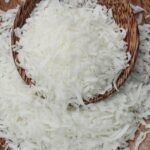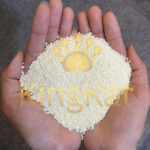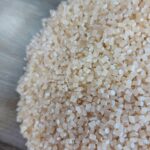CASHEW NUT SHELL OIL


Table of Contents
ToggleIntroduction
Cardboard packaging is an essential component of the global logistics and retail industries, providing a versatile and eco-friendly solution for transporting goods. In recent years, tapioca starch has emerged as a valuable resource in producing cardboard, offering several benefits over traditional materials. This article explores the application of tapioca starch in cardboard production, highlighting its advantages, challenges, and future trends.
What is Tapioca Starch?
Tapioca starch is known for its high purity and neutral taste, tapioca starch is commonly used in food products. However, its properties also make it suitable for industrial applications, including cardboard production. Key properties of tapioca starch that are beneficial in this context include its excellent adhesive qualities, biodegradability, and renewability.

The Role of Tapioca Starch in Cardboard Manufacturing
In the cardboard manufacturing process, starch is used as an adhesive to bind the layers of paper together. Tapioca starch is particularly effective due to its strong adhesive properties, which help create a sturdy and durable product. During production, the starch is mixed with water to form a paste, which is then applied to the paper layers. This adhesive mixture ensures the layers bond tightly, producing a robust and reliable cardboard structure.
Tapioca starch offers several advantages compared to other starches such as corn or potato. It has a higher viscosity, enhancing its adhesive strength, and is more consistent in quality, leading to fewer production issues. Additionally, tapioca starch tends to be less expensive in regions where cassava is abundantly grown, making it a cost-effective alternative.
Benefits of Using Tapioca Starch in Cardboard Production
The use of tapioca starch in cardboard production provides multiple benefits:
- Environmental Benefits: Tapioca starch is derived from cassava, a renewable resource. It is biodegradable, reducing the environmental impact of cardboard waste. The production process for tapioca starch also tends to be less resource-intensive compared to synthetic adhesives.
- Performance Benefits: The high adhesive strength of tapioca starch contributes to the durability and resilience of cardboard products. It also provides a smoother surface for printing, which is advantageous for branded packaging.
- Economic Benefits: Tapioca starch is often more affordable than other types of starch, particularly in regions where cassava is a major crop. Its consistent quality reduces waste and downtime in production, further enhancing cost-effectiveness.
Challenges and Solutions
While tapioca starch offers many advantages, there are also challenges to its use:
- Moisture Sensitivity: Tapioca starch adhesives can be sensitive to moisture, which might affect the integrity of the cardboard in humid conditions. Innovations such as adding moisture-resistant additives or developing new formulations are addressing this issue.
- Supply Chain Variability: The availability of tapioca starch can fluctuate based on agricultural conditions. Developing robust supply chain strategies and alternative sourcing options can mitigate this risk.
Technological advancements continue to improve the performance and reliability of tapioca starch in industrial applications, making it a more viable option for large-scale production.
Future Trends and Innovations
The future of tapioca starch in cardboard production is promising, with several trends on the horizon:
- Sustainability: As environmental concerns grow, the demand for sustainable packaging solutions will drive further adoption of tapioca starch. Innovations in biodegradable and compostable packaging materials are expected to rise.
- Smart Packaging: The integration of smart technologies, such as embedded sensors or QR codes, into cardboard packaging can be enhanced by the smooth surface provided by tapioca starch adhesives, facilitating better consumer interaction and product tracking.
Conclusion
Tapioca starch is proving to be a valuable asset in the production of cardboard, offering environmental, performance, and economic benefits. As the industry continues to evolve, the role of tapioca starch is likely to expand, driven by the need for sustainable and efficient packaging solutions. The integration of this natural resource into cardboard production not only enhances product quality but also aligns with global sustainability goals, ensuring a brighter future for both the packaging industry and the environment.












